
views
Practicing Balance
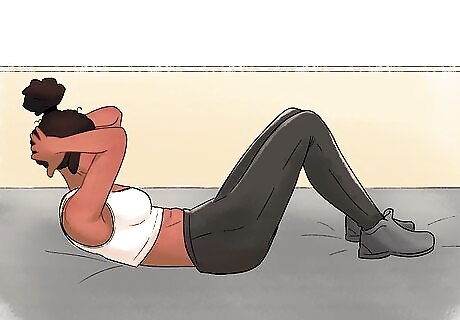
Do core strengthening exercises to make your balance stronger. Do crunches, sit-ups, and planks to improve the strength in your upper body and torso area. This will make it easier for you to balance and give you more muscles to support your body as you dance. Try doing 30 crunches once a day to build up your ab muscles. Add 30 sit-ups to your exercise routine once a day to increase your core strength. Do a plank by getting into a push-up position by balancing on your hands and feet, but keep your arms straight instead of bending down into a push-up. Hold this position for 30 to 60 seconds at a time, 3 times a day.
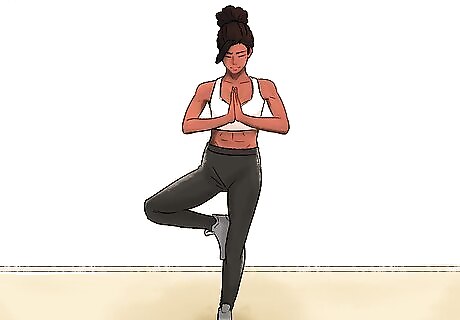
Try yoga poses to help improve your balance. To do a tree pose, stand up straight and slowly raise one foot and rest it on the inside of your other leg. The leg you raised should stick out in a triangle. To do a chair pose, stand up straight with your feet beneath you and slowly bend your knees into a squat position. Raise your arms above your head and engage your core. Try holding each pose for 30 seconds each, 3 times a day.

Stand up straight with good posture. Put your feet about shoulder-length apart and push your spine as straight as it can go. Tuck your ribcage in toward your back and lift your neck up off your shoulders. Keep your bottom tucked in and squeeze your abs to engage your core.Tip: To breathe while keeping your ribcage tucked in, try to think about inflating your lungs toward your back. This will keep your body in a straight line as you dance. Good posture helps you dance more gracefully because it aligns your upper and lower body and strengthens your core, which creates strong, graceful movements.
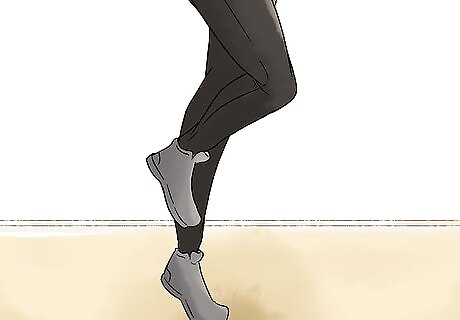
Walk or dance on your tiptoes once a day. Raise your body up until you are balancing on your tiptoes. You may need to hold onto a wall or a chair for support if you are just starting out. Try walking around and doing dance moves while keeping your feet elevated to improve your balance and make your moves seem more graceful. A lot of dance moves are done in releve, or on your tiptoes. This is a great skill to have if you plan to keep dancing in the future.
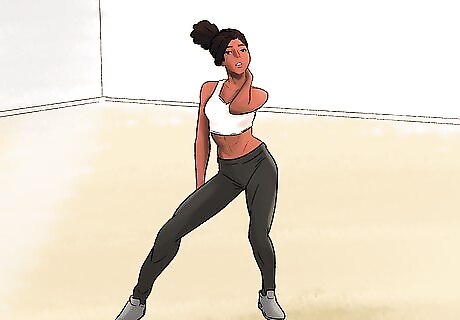
Engage your core when you dance. If you are doing a move that requires you to stay in place while moving your legs or arms, engage your torso and push back your shoulders to improve your balance. This will make your dancing look and feel more effortless and graceful. It can take some practice to engage your abs without looking stiff or strained. The more you practice, the better you will get at it.

Focus your head in one spot when you do turns. As you set your body up for a turn, pick out one specific point in the room that is easy to spot with your eye. This could be a clock on the wall, a bright poster, or the corner of the mirror. As you turn, keep your eyes focused on that point as long as you can until you have to whip your head around, and then focus back on that point again when your body turns back around. This is also called spotting.
Making Your Movements Fluid
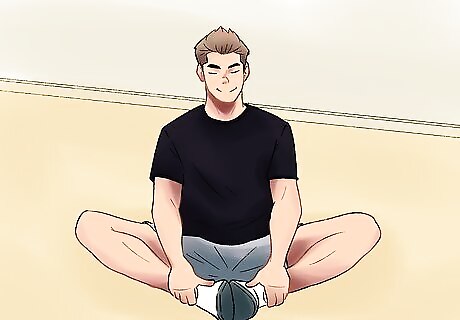
Stretch every day to become more flexible. Most dance moves require at least a little bit of flexibility, and the more flexible you are, the less choppy the movements will look. Try touching your toes, doing a butterfly stretch, and practicing the splits every day to improve your flexibility over time.Tip: Warm up by doing jumping jacks or high knees for about 10 minutes before you stretch. This will warm up your muscles so you don’t injure yourself. Try holding each stretch for 1 minute at a time, 3 times each. Gaining flexibility takes time. Keep stretching every day to start seeing results in a few months. Stretching should make you feel sore, but it shouldn’t cause you pain. If you are doing a stretch and it hurts, decrease the amount you are stretching to avoid pulling or tearing a muscle.
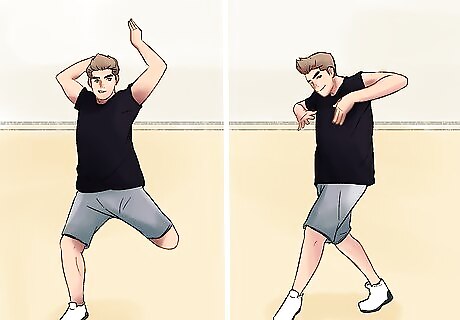
Do 2 to 3 dance moves at a time, not each one individually. If you are learning choreography, you may be learning your dance 1 move at a time. As you practice your moves, try to do 2 to 3 moves at a time so you can put them together fluidly as you dance. This will help you avoid choppy, short movements. For example, try doing a pirouette into a rondevu, then ending in fifth position. Each movement can flow into each other without any choppiness. Memorizing the choreography will help a ton as you try to link each move together. Think about the next move you are going to do before you do it to make this easier.
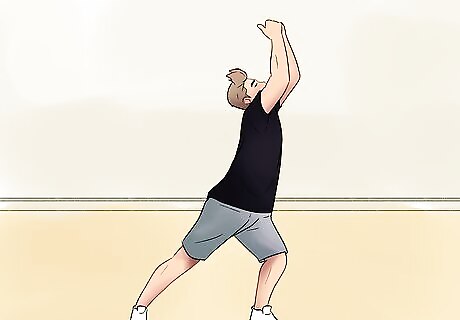
Lengthen your limbs by extending them away from your body. Think of your limbs as extensions of your entire body, and use them to add graceful, delicate gestures to your dancing. This will make you look taller and your movements seem more fluid. Try not to overextend or lock your elbows or knees, as this can make your movements look stiff and jerky.

Dance with your entire body, even when you aren’t using some parts. Although some dance moves only require you to move one or a few parts of your body at a time, try to think of your entire body being a part of your dance. For example, if you are only moving your arm, think about what the rest of your body is doing. Hold your head high, relax your shoulders, elongate your legs, and engage your torso all while moving one arm. It can be tough to think about all of the parts of your body at once. With practice, you’ll be able to track your movements and your body better.
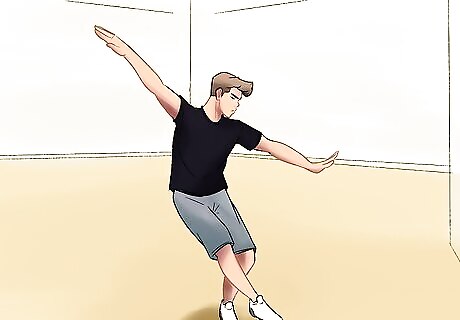
Engage your hands and feet as you dance. Your body can look great, but if your hands or feet are flexed or relaxed, they can draw attention away from your skills. Take a second to think about what your extremities are doing and tie them into each movement that you make. For example, in ballet, your feet should always be pointed and your hands should be held softly rounded. In modern or jazz, your feet could be flexed or pointed, and your hands may be spread wide open or held together.
Improving Your Dance Skills
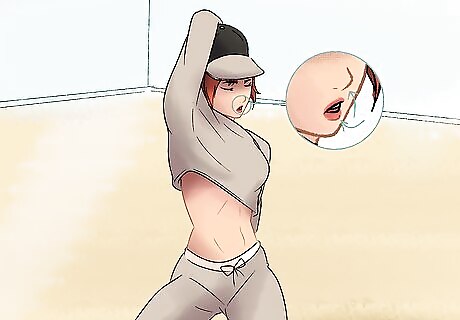
Remember to breathe as you dance. When you’re focusing on completing your movements and doing everything correctly, it can be easy to hold your breath. This can make you look stiff and make your moves feel choppy. Remind yourself to take deep, even breaths so you can flow through your dance. Breathing while you dance will also give you more stamina so you can dance longer.
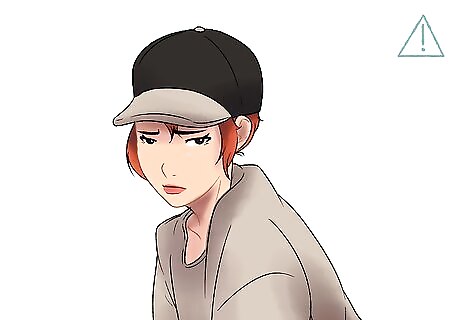
Try not to overthink your movements as you dance. Although it can be tough, try to move your body without thinking about a ton of things and instead go with the flow of the music. This will help you seem more relaxed and let your body flow better. Listen to your choreography’s music as much as you can so you can memorize its beats and rhythm to make this easier.

Put energy into every dance move that you do. Even though dancing is tiring, if you lose energy halfway through your routine, it’s not going to look graceful. Do each move with as much energy as you can so your body looks graceful and natural instead of tired and heavy.Tip: You can work on your stamina by doing cardio throughout the week. Running, jogging, and swimming all increase your heart rate so you can practice exercising in intense, short bursts.

Follow the beat of the music. If all else fails, your dancing can look great if you follow the tempo and the rhythm of the song you’re dancing to. Listen to the music and find the consistent beat that happens throughout the song. Most music keeps time in 8 counts. If you can find the start of an 8 count, try keeping track in your head to find the beat throughout the entire song.
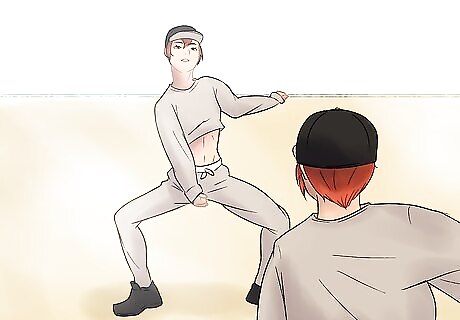
Watch yourself dancing in the mirror. The best way to tell how you look while dancing is to watch yourself. Take a look at how you are moving when you do choreography and try to see if you look stiff or fluid. Take note about what your hands and feet are doing as well as what your posture looks like. If you don’t have access to a large mirror, try recording yourself on your phone or laptop instead.




















Comments
0 comment